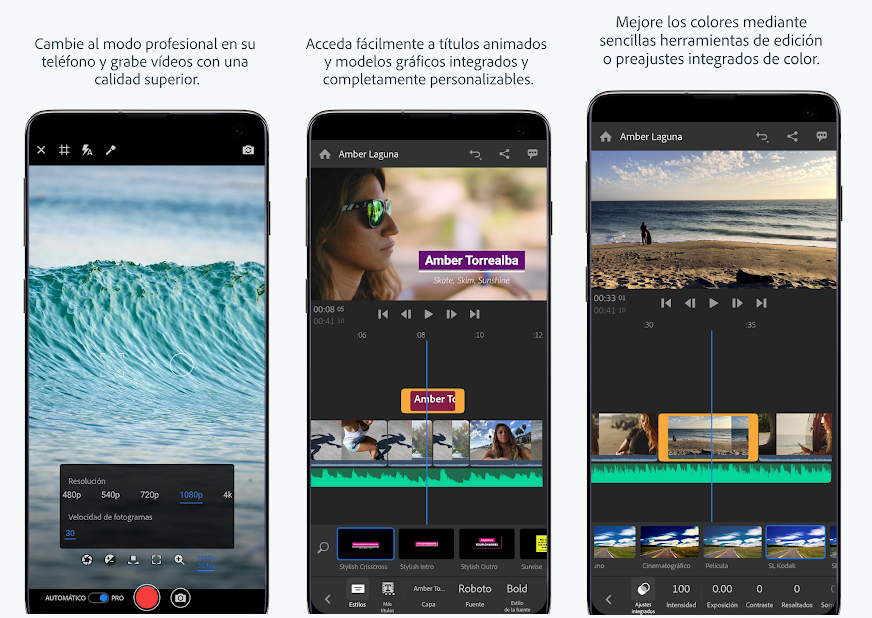

I’m sure I could get the iPad to the point where it would start to struggle, but it should be able to handle just about any rough cut, especially given Resolve’s new streamlined proxy tools. Shortcuts are the same, including the all-important J-K-L playback controls, and I didn’t notice a substantial difference in playback speed, even when stacking effects and multiple 4K clips.
ADOBE PREMIERE RUSH IPAD PRO FULL
That combination, a powerful processor and a full keyboard with trackpad, enabled a user experience on the iPad that’s nearly identical to the experience on my work laptop, a 16-inch MacBook Pro with an M1 Pro processor. My rental for this particular test was a 12.9-inch M2 iPad and a Magic Keyboard. That approach is a welcome change from the days of underpowered mobile-specific apps, and I think Blackmagic’s ability to replicate the desktop experience is largely due to the iPad’s exponential increase in processing speed over the past few years. While the mobile version doesn’t include everything, notably lacking the Fairlight and Fusion panels I was just praising, what is there performs exactly how you’d expect if you’re coming from a desktop. I borrowed some BTS footage from The Mandalorian for testing purposes.īlackmagic has clearly prioritized making the mobile version of Resolve feel as close as possible to the desktop version. How does the mobile version compare? I’m happy to say that it feels surprisingly similar. But all that is about the desktop version of Resolve. And with a weekly publishing schedule on YouTube, we need all the time we can get. Avoiding the cumbersome process of sending projects to, say, After Effects for graphics work saves precious time. As Blackmagic have added functionality in the form of Fairlight (audio editing/mixing) and Fusion (compositing and effects), they’ve been integrated as panels directly into Davinci Resolve rather than released as separate pieces of software.

Resolve, on the other hand, is a little more self-contained. While Adobe Premiere Pro has gotten more and more capable as a standalone solution, now including robust tools for color correction and audio editing, I still find myself occasionally having to move to a different application for more demanding tasks. I’ve grown to prefer handling everything in the same place rather than roundtripping between more specialized Adobe apps for particular jobs. Lensrentals uses Davinci Resolve for the majority of our in-house video work, primarily because it strikes a good balance between features and speed. So, why not put these apps to the test and determine which is best for which purpose? We’ll begin with the mobile version of a desktop application that we use nearly every day at Lensrentals. Few people need sun and human interaction more than video editors and mobile devices are finally powerful enough to act as primary video editing workstations. With that in mind, I thought it’d be helpful to compare a couple of the more popular video editing apps for mobile devices.

Only interacting with a cat all day is NOT GOOD for the human brain, so I try to write my blog articles and send my emails from a coffee shop or library at least a couple of times a week if I can. As a person who works remotely the majority of the time, I often need to leave home for my own sanity.


 0 kommentar(er)
0 kommentar(er)
